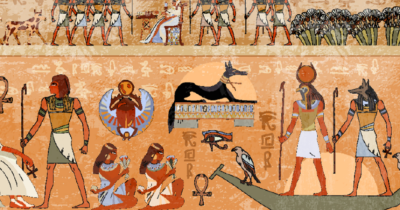Civilization, a hallmark of human social development, gradually emerged with the differentiation of social classes, the birth of writing, and the formation of a ruling class.
Its connotations are profound, encompassing philosophy—the gathering place of human wisdom; religion—a haven for spiritual solace; and art—the interpretation of the beauty of all things.
What is Type III Civilization?
The term was first coined by Soviet astronomer Nikolai Kardashev, who devised a method to quantify the degree of technological advancement of societies. He initially proposed three categories: Type I, Type II, and Type III, and later added more categories to encompass even more possibilities, civilizations beyond our imagination.
Type III Civilization is considered humanity's "ultimate goal."
According to Kardashev, a Type I civilization is capable of utilizing all the energy generated by its parent planet. A Type II civilization is capable of efficiently harnessing the energy generated by a star, transmitting more energy back to Earth through an optical system orbiting the sun, similar to ultra-efficient solar panels. A Type III civilization is capable of interstellar travel, with all stars in the galaxy becoming "natural minerals" to be exploited or captured. The Kardashev scale has recently been expanded, with Type IV harnessing the energy of the entire universe. Type V unlocks the power of the multiverse.
What is the current level of our technological civilization?
According to Carl Sagan's explanation in the 1970s, humanity's current level should be classified as Type 0.7, meaning we are not yet a full Type I civilization! In Kardashev's grand scheme, this is quite disappointing, as we are the most advanced civilization we have ever encountered in the entire universe. For Sagan, based on our technological advancements and our access to information, we are not yet at the level of Type I.
Theoretical physicist Michio Kaku has stated that he believes humanity is fully confident of reaching Type I within the next century or two. While the progress from 0 to 1 may seem slow, we have at least achieved a degree of technological and social advancement, indicating that we are heading in the right direction. For example, we've already made strides toward a global language. Our global communications system, the internet, has developed global coverage in just a few decades. Major cohesive trade blocs like the European Union have emerged. Our nation's quantum communications, the Sky Eye telescope, and other advancements all indicate that humanity's technological and social capabilities are rapidly advancing.
However, to truly become a Type I civilization, we must balance our technological advancement with the environment, ecosystems, and the planet we inhabit, otherwise we risk premature self-destruction.
If we are to achieve a Type III civilization, we will need more than a hundred cultural and scientific revolutions, and the problem of energy—locating, storing, and transmitting it—will be at the heart of our efforts.
We must build a system to capture energy transmission from an entire star. This involves the laws of thermodynamics, the laws of stable matter, and the ICIT laws of planetary evolution. In this process, there may be unforeseen difficulties that will slow our technological progress. However, our population is growing rapidly, and each generation is constantly learning, applying and refining past knowledge to develop new, more efficient, and more advanced technologies. Therefore, if we humans want to evolve to the next type of civilization, we should develop peacefully, concentrate most of our resources on improving the environment, improving social structure, optimizing resources as much as possible, and establishing a truly united human alliance with sufficient cohesion. Only then can we enter the "third type of civilization", but this may require us to rewrite the meaning of being human, readjust our natural instincts, and work as a thriving, mobile, and intelligent group. This process may take hundreds, even thousands or tens of thousands of years.

